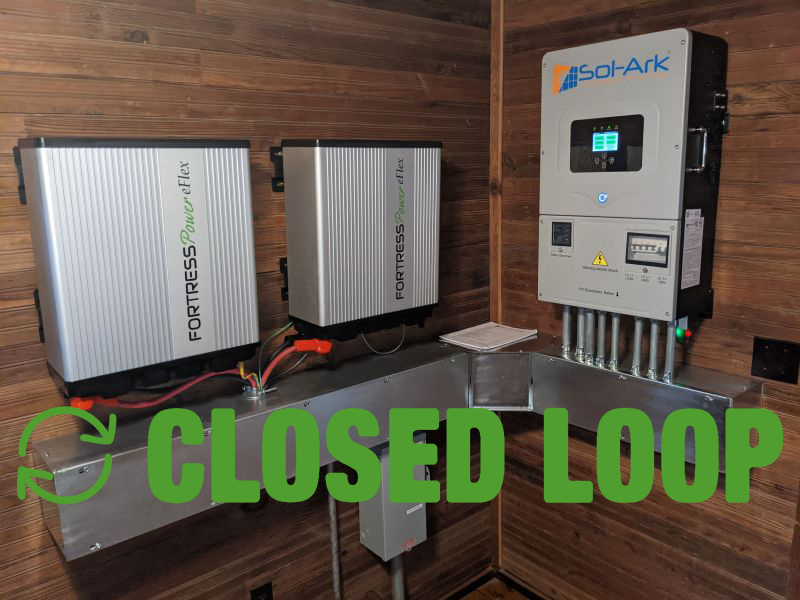At the height of the coronavirus pandemic lockdown, demand for solar battery storage continued to soar. According to the recent Energy Storage Monitor report, 48.7 MW and 112 MWh of storage capacity were installed in Q2, up 10 percent from Q1. This was the second-best quarter in history, even though the number of residential solar deployments dropped during the same time period.
There is no denying the fact that more people than ever are adding batteries to their homes to store solar energy and provide a backup source of power. One of the top drivers behind the recent growth in the solar battery storage market has been the emergence of closed-loop communication between the battery and the hybrid inverter.
Most batteries on the market still use open-loop communication. For example, when you connect a battery to an inverter, the only thing the inverter can “see” and measure is voltage. If the inverter is connected to a 48V battery, the inverter can see that it’s a 48V battery. With open-loop communication, the inverter receives no other information.
The inverter performs its own state-of-charge calculation, which basically says how much juice the battery has left. The problem is that there are many different ways to calculate state of charge. As a result, the calculation displayed on the inverter may not line up with the calculation displayed on the battery, and the difference can be significant.
The customer could be justifiably confused and concerned if, for example, the battery shows 50 percent state of charge and the inverter shows 80 percent state of charge. Recalibration can help, but this is a temporary fix that becomes tedious over the course of a battery’s 10-year lifetime.
What Is Closed-Loop Communication?
Generally speaking, closed-loop communication is the process of receiving information and then confirming that information with the sender. In other words, the loop is closed.
This form of communication was used in early voice radio interactions. Words like “over,” “roger,” “wilco,” and “10-4” were specifically used to close the loop.
In the world of solar battery storage, closed-loop communication uses a modbus protocol, which is essentially a machine language. Newer batteries like the Fortress Power eVault and eFlex each have a battery management system that constantly sends out signals in modbus to communicate the state of the battery, including the precise state of charge and the total throughput.
Most major inverter brands have some version of the modbus protocol. Coordination between engineers will ensure that batteries and inverters speak the same language to enable closed-loop communication. This makes it possible for the inverter to receive and confirm real-time information from the battery, usually through an RJ45 ethernet cable.
Why Is Closed-Loop Communication Important to Solar Battery Storage?
Closed-loop communication will let the battery know if it’s being overcharged or the voltage is too low, based on detailed information provided by the inverter. This can protect and extend the life of the battery, reduce charge times, and enable the entire system to operate more efficiently.
Closed-loop communication also saves time for the installer, who doesn’t have to make sure complex parameters are programmed correctly. It’s automatic.
From the customer’s perspective, the state of charge displayed on the inverter will match the state of charge displayed on the battery, which reduces stress and confusion. Most inverters have mobile apps that allow homeowners to monitor the details of their solar battery storage solutions.
When the battery is able to send real-time data to the inverter, your solar energy system will be safer, more intelligent, more efficient, and more reliable. Closed-loop communication represents the future of solar storage, and it’s time for the entire industry to get on board.









